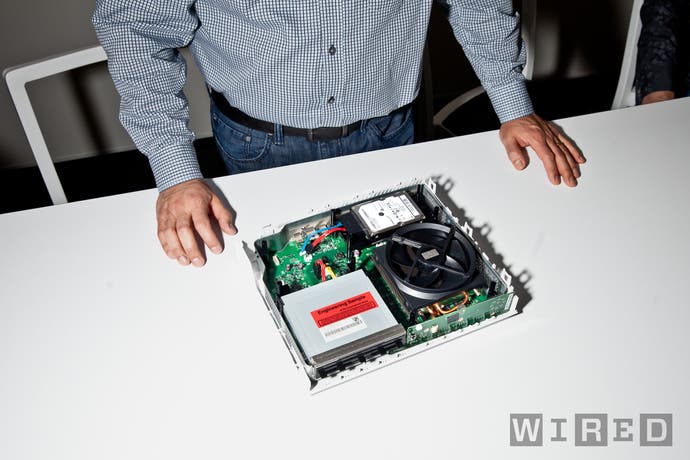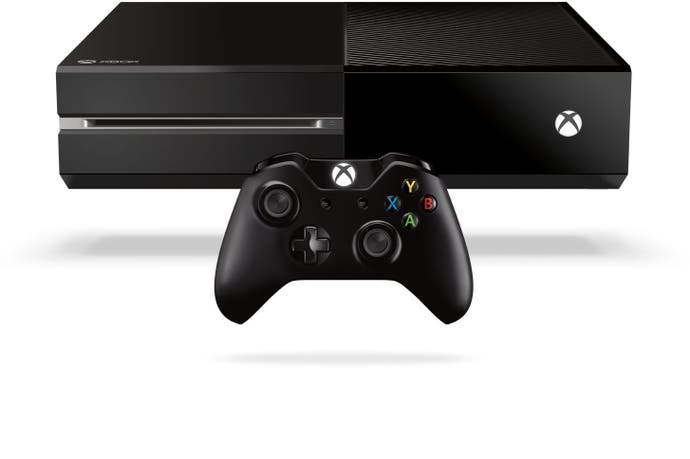Xbox One is designed to be always-on for 10 years
New development hardware also reveals that it's near-silent a lot of the time.
Inside sources at Microsoft have spoken to Digital Foundry about why the Xbox One hardware is so large, and what the tangible benefits of the larger footprint are for the user.
Our information suggests the Xbox One design is based on an ambitious brief, essentially impossible to test in anything resembling real-life conditions, and so the company played it safe, putting unit reliability first. A highly placed source says that the console has been designed with a ten-year lifecycle in mind and that it is designed to be switched on for that entire period.
What's more, during that time it needs to operate almost silently in order to earn its place in the living room. It's a unique hardware challenge, and so the company opted for a large design where heat dissipation comes first. Microsoft's engineers are also aware that the company's reputation for quality hardware is still in the balance after the Red Ring of Death Xbox 360 build quality fiasco, which cost the company over a billion dollars.
The net result is a relatively voluminous piece of console hardware, which may take up a fair amount of room in the lounge but has tangible benefits for gamers to make up for its imposing presence.
Microsoft has not released any official specifications on the dimensions of the final box, but extrapolating from the sizes of known components (principally the USB port), Xbox One is approximately 34x26x8cm - more set-top box than console, and noticeably larger than the launch version of the Xbox 360.
Despite the near-final hardware present at E3, the conditions made it impossible for the any kind of audio testing to be carried out on-site, but developers working with the hardware tell us that in its idle and low-activity states, the unit is entirely silent and you can barely feel any heat being output from the unit's vents.
Indeed, we're told by one development source that prototype versions of the hardware - which use the same chassis as the final retail unit - didn't have working power lights, and that it was almost impossible to tell whether the console was in operation or not unless it was hooked up to a display. It's a claim we're looking forward to testing when we're hands-on with the console.
"Developers working with the hardware tell us that in its idle and low-activity states, the unit is entirely silent and that you can barely feel any heat being output from the unit's exhaust vents."

Our sources say that Xbox One is expected to remain almost entirely silent in standby and during its media functions, with fan noise only noticeable during gaming when the AMD processor is really being put through its paces.
Even here, we should prepare for a much more pleasant aural experience compared to the current-gen consoles - and not just because the optical drive will be inactive during gameplay. Wired's internal photography of the Xbox One (above) reveals a decent-quality heat sink (note the copper heat pipes) and a relatively large fan. The larger the blades of the fan, the slower they need to spin in order to displace the same amount of air as a smaller fan, meaning a quieter unit.
Also consider the technological make-up of the AMD processor. The closest match we have in terms of PC hardware to the Xbox One graphics core is the Radeon HD 7790, which draws 85W at peak. The Xbox One version runs at lower frequencies and has two fewer compute units. AMD's Jaguar CPU architecture is also highly energy efficient - it's designed with tablets in mind. Even factoring in the DDR3, ESRAM and custom silicon, we should expect see a complete system power draw that's a world away from the 'power at all costs' approach to the launch versions of the Xbox 360 and PS3, which used in the region of 170-200W.
To illustrate just how far power efficiency has come since the current-gen consoles arrived, our "target Xbox One" PC test rig with an overclocked 4.3GHz i7 and underclocked Radeon HD 7850, consumed 220-230W playing Crysis 3.
Perhaps the Xbox One's power efficiency sounds too good to be true, especially when rumours not so long ago painted a very different picture of hot and loud Durango development hardware. Our sources concur that the February/March dev kits were indeed very loud indeed, but it wasn't due to over-heating - quite the opposite in fact. The thermal control algorithm - which monitors the heat output of the major chips on the motherboard and adjusts fan speed accordingly - simply wasn't implemented in the developing OS, and so to avoid damaging the hardware, the fans were set to 100 per cent all the time. This was resolved by a software update back in March that brought Xbox One to its current stealth-like state, and our understanding is that final development hardware - which is a complete match for retail silicon - started rolling out to developers early in July and remains extremely quiet.
The ASCII-inspired Durango logo you see on this page - which presents when the development hardware boots - has been swapped out for the Xbox One logo in the new development hardware, accompanied by a very 360-like animation. The launcher screen you see here has also changed beyond recognition.
"Our understanding is that final Xbox One development hardware - which is a complete match for retail silicon - started rolling out to developers early in July."

Meanwhile, the background Xbox One software is nearing completion, and one of the key goals is making gameplay extremely fast to access. In an internal post-mortem of the Xbox 360 that helped shape the direction of Xbox One, one of the key problems Microsoft engineers wanted to address was the lack of immediacy in current-gen console gameplay, where even the most family-friendly titles can take up to three minutes to load. A key plus point mobile games hold over console is the speed with which casual users can play, and it's an advantage that next-gen console is going to have trouble competing with.
Despite moving away from optical discs and onto hard drive for games, filling up multiple gigs with data is still going to take time. We're told that addressing load times is a key concern, but another approach is to retain game states in RAM while the unit is inactive, similar to the way that you can return to a PS Vita game days after you last played it. The entire contents of the memory are preserved, and the unit wakes up immediately, allowing you to dive back into the game.
It's an approach that PS4 also utilises, but our Microsoft sources genuinely believe that the TV integration elements set it apart, and that once you have experienced what it's capable of you can never go back. Instant restart is a key feature, but in the here and now we can't help remaining unconvinced about the focus on the TV integration elements of the Xbox One operating system.
Our sources suggest that internally there is a great deal of frustration within Microsoft that the message about instant access never got across, and that the focus now is on Gamescom in August to get it right.

